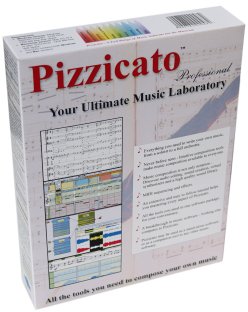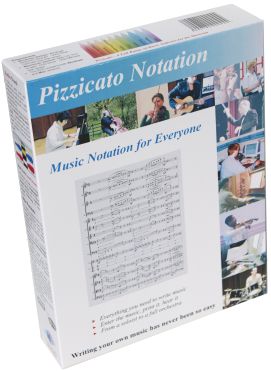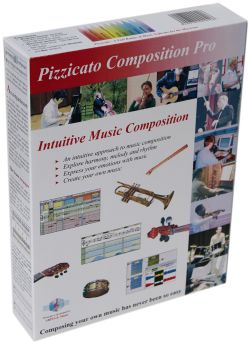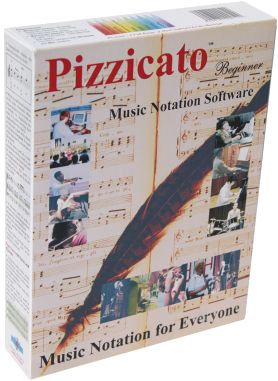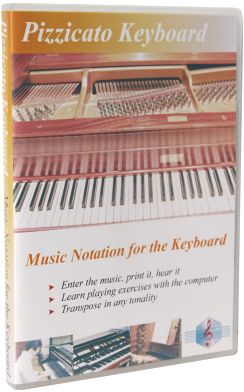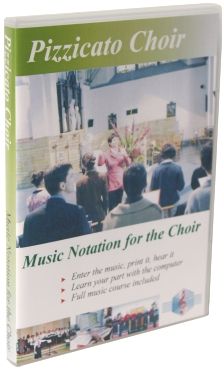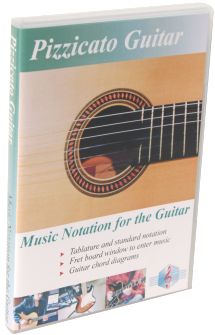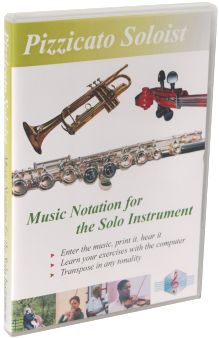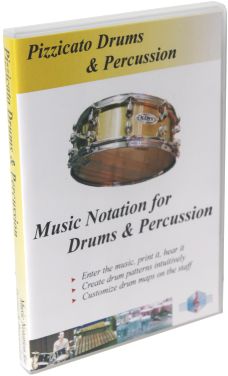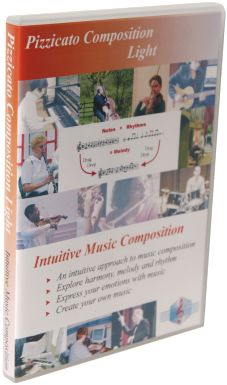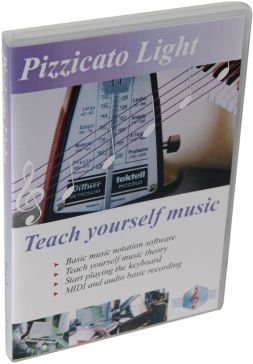Pianistic notation: cross staff beaming
In piano scores,
it is frequent to use the 2 clefs (G and F) to write the playing
of a single musical passage. Technically, this means that the
same rhythmic voice (which is normally written on one staff) will
be written over 2 staves. Here are some examples: In these
measures, using two staves is done to make it easier to read the
notes with the 2 clefs. The lower notes would have been difficult
to read in the G clef. But these measures only include one
rhythmic voice (as Pizzicato defines the rhythmic voice). To write this
type of measures with Pizzicato, you need to understand that the
notes always belong to one of the two staves. Here we have chosen
the upper staff to place the notes, but it could have been the
lower staff also. It is better to use the staff which contains
most of the notes. Once a note is
written in a staff, you can drag it to the other staff, but this
is only a graphic effect: the note always belongs to its original
staff. It means that the justification of the rhythmic voices is
still made on the basis of the content of the original measure. For more
details, please see the page http://www.arpegemusic.com/manual30/EN325.htm
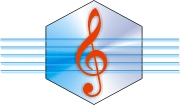
All rights reserved for all countries
Pizzicato is a trademark owned by Arpege sprl



















